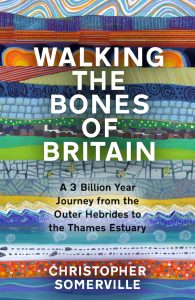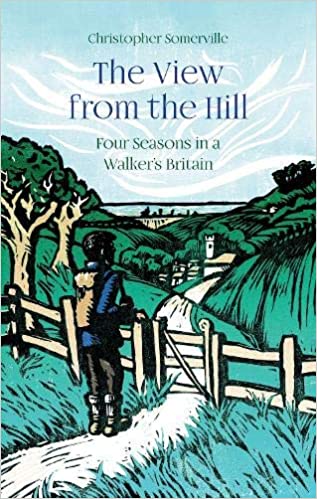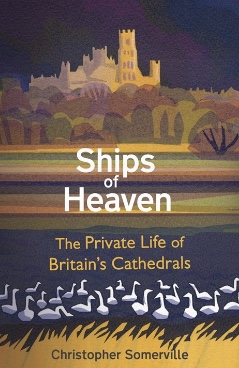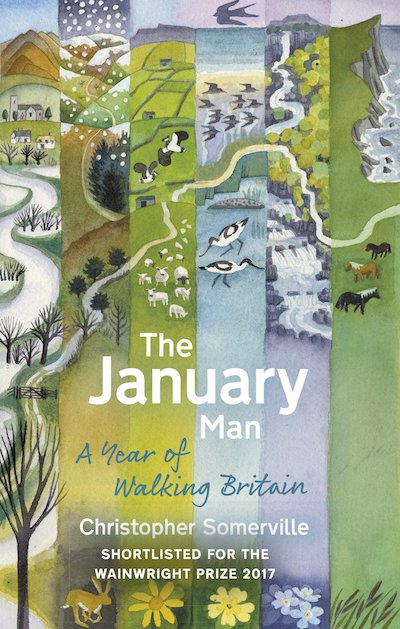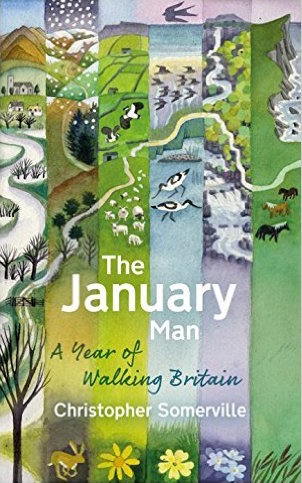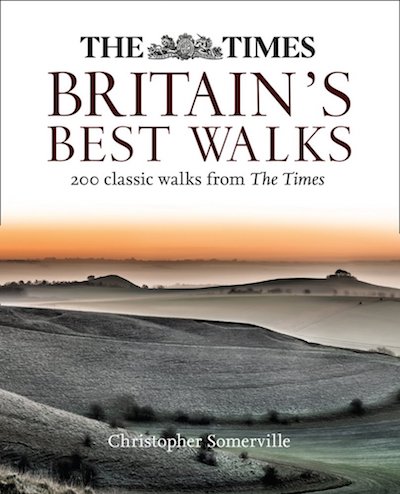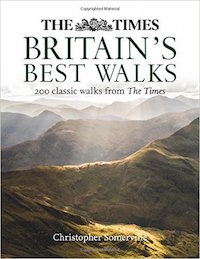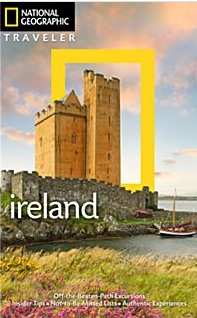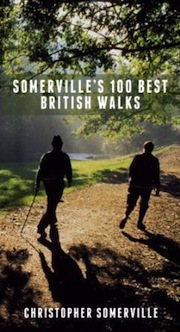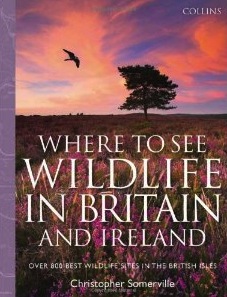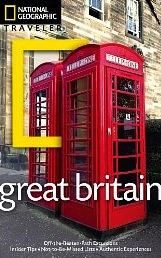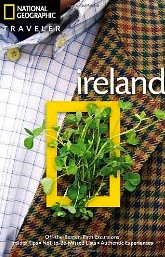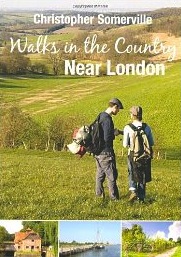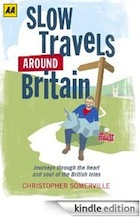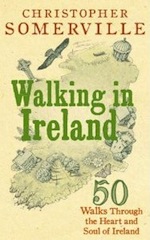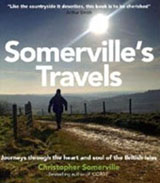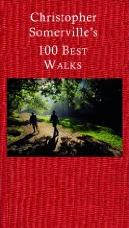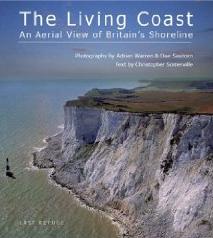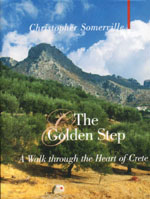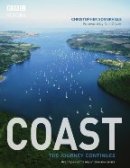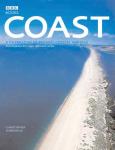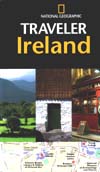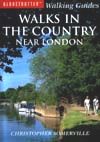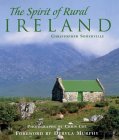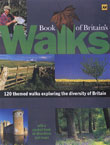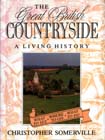Search Results : norfolk
Facebook Link:
1. Lanlivery and Helman’s Tor, Cornwall
Lanlivery lies lost among its high-banked lanes to the west of Lostwithiel, a tiny hamlet sprinkled around the nucleus of St Brevita’s Church and the ancient Crown Inn. The pub – cosy and welcoming – dates back to Norman times. In fact it predates the church; the masons who built St Brevita’s with its tower of striped granite were put up there. As for Brevita: rather charmingly, absolutely nothing whatever is known about her – or him. There’s certainly a Saints Road or Saints Way that runs past the village, a former droving track (now a waymarked long-distance path) whose slanting course across the Cornish peninsula is dotted with ancient crosses, wells, standing stones and burial sites. It’s this path you follow between high hedges, a secret lane that smuggles you through the fields until you come out at the foot of Helman’s Tor. Up at the summit among the granite boulders you’ll find a logan or rocking stone – see if you can discover the subtle pressure needed to make it rock, while admiring the sensational views across the rolling Cornish farmlands.
Start: Crown Inn, Lanlivery, near Lostwithiel PL30 5BT (OS ref SX 079591)
Walk symbol: 4 miles, 2 hours, OS Explorer 107
Route: From Crown Inn, take Luxulyan road. At chapel, straight on (‘Lanivet’). In a quarter of a mile, right up green lane (‘Saints Way’) for 1 and a quarter miles to car park under Helman’s Tor. Climb Tor; return same way.
Lunch symbol: Crown Inn, Lanlivery (01208-8727071; www.wagtailinns.com).
Grade: 2/5 boots. Gentle ascent of tor. Green lane can be muddy!
Info: Lostwithiel TIC (01208-872207); www.visitcornwall.com
2. Stourhead and Alfred’s Tower, Wiltshire
Superb 18th-century Palladian grounds and park created by the Hoares – father Henry ‘The Good’, son Henry ‘The Magnificent’. Stroll a circuit of the lake and its temples, follies and grottoes, or step out up the valley to the wonderful Rapunzel-like Alfred’s Tower on the ridge above. Then cosy up to a cockle-warming casserole in the Spread Eagle Inn at the park gates, or plump for cake and cuppa in the tearooms.
Start: Stourhead car park, BA12 6QD (OS ref SX 778340) – signed from B3092 Zeals-Maiden Bradley road, off A303 at Mere
Walk symbol: 1 and a half miles round lake (1 hour) or 5 and a half miles Alfred’s Tower circuit (2-3 hours), OS Explorer 142 (grounds map available at Visitor Centre)
Route: From Visitor Centre. down path. Don’t cross bridge to gardens and house; turn left to Spread Eagle Inn and Lower Garden entrance (pay/show NT card). Anti-clockwise round lake. For Alfred’s Tower circuit: At Pantheon, don’t turn left across Iron Bridge; continue through trees to gate and gravel roadway. Right (‘Alfred’s Tower’); follow blue arrows up valley for 1 and a half miles. At top, left to Alfred’s Tower. From tower, retrace steps 100 yards; right into woods (yellow arrow/YA). In 300 yards YA points right, but keep ahead on main track. In 500 yards at crossroads, main track swings left (YA); but take downhill path. In 200 yards near foot of slope, left (YA) past shed; follow YA back to Pantheon; cross Iron Bridge; complete lake circuit.
Lunch symbol: Spread Eagle Inn (01747-840587; www.spreadeagleinn.com)
Tea symbol:
Grade: Lake 2/5 boots; Alfred’s Tower 3/5.
Stourhead (National Trust): 01747-841152; http://www.nationaltrust.org.uk/main/w-stourhead
3. Chidham Peninsula, West Sussex
The Chidham peninsula hangs like a skate’s wing in the middle of Chichester Harbour’s vast flats of marsh and mud. At any time of year you’ll get a tang of green countryside and a salty smack of the sea here. In winter there’s the added thrill of big crowds of over-wintering seabirds.
From the friendly Old House At Home pub in Chidham village, grass paths lead to the eastern shore of the peninsula. There’s a fine view across water, mud flats and saltmarsh to the squat grey spire of Bosham church above a cluster of waterfront houses – every chocolate-box artist’s dream of delight. The sea wall path runs south around Cobnor Point with its wonderfully gnarly and contorted old oaks, and on up the edge of Nutbourne Marshes where wildfowl spend the winter in their tens of thousands. A new sea bank has been built inland here, against the day when the old one is washed away by the never-satisfied, ever-hungry sea.
Start: Old House At Home PH, Chidham PO18 8SU (OS ref SV 786040)
Walk symbol: 5 miles, 2 hours, OS Explorer 120
Route: From pub, right along road. Just before church, right along grassy path (fingerpost), past Chidmere Pond to road. Right for 100 yards; right (fingerpost) through car park; left along hedge to shore (797034). Right (clockwise) round peninsula for 3 miles to pass Chidham Point (779042). In a quarter of a mile, right (781045) on footpath along field edges to road; right to Old House At Home.
Lunch symbol: Old House At Home PH, Chidham (01243-572477; www.theoldhouseathome.co.uk)
Grade: 1/5 boots. Flat seawall path.
Info: Chichester TIC (01243-775888; www.visitchichester.org); Chichester Harbour Conservancy (www.conservancy.co.uk)
4. Shoreham and Eynsford, Kent
A really delightful walk in north Kent’s wide Darent Valley. The rood screen and organ casing in Shoreham’s church boast fabulous carving. Just down the road, Water House (private) was a 19th-century haven for artists including William Blake and Samuel Palmer. The Darent Valley Path takes you north in lovely river scenery to pass Lullingstone Castle, a gorgeous Tudor country house, and Lullingstone Roman Villa – 30 rooms, several frescoes, and a magnificent mosaic floor. At the turn of the walk, Eynsford is a photogenic old village with a fine tumbledown Norman castle. From here you follow a quiet road up a secret valley, then climb over the ridge through the woods to return to Shoreham.
Start: Shoreham station, Shoreham, Kent TN14 7RT (OS ref TQ 526615)
Walk symbol: 8 miles, 3-4 hours, OS Explorers 147, 162
Route: Shoreham station – Shoreham church (523616) – Water House (521616) – Darent Valley Path (signed) north for 3 and a half miles via Lullingstone Castle (530644) and Lullingstone Roman Villa (530651) to Eynsford. Left along A225 to Eynsford Castle (542658); return through village. Just before railway bridge, left past Eynsford station; follow Upper Austin Lodge Road for 1½ miles. Before Upper Austin Lodge, fork right past golf clubhouse; footpath south-west through woods for 1 mile to cross A225 and railway (526618); dogleg left to Station Road – Shoreham station.
Lunch symbol: Olde George Inn, Shoreham (01959-522017); teashops and pubs in Eynsford
Grade: 2/5 boots. Field and woodland paths (muddy!).
Info: Lullingstone Castle and gardens (www.lullingstonecastle.co.uk) closed till April; Lullingstone Roman Villa and Eynsford Castle (EH; www.english-heritage.org.uk) open Wed-Sun till 31 Jan (closed 24-26 Dec, 1 Jan); open daily thereafter.
5. Regent’s Canal, Victoria Park and Thames Path
To get you going on this exploration of east London’s waterways and markets, a gentle blur of reggae among the earring and shawl stalls in the covered shed of Old Spitalfields Market. Next, Brick Lane’s street market – curry, chilli, salsa, roasting beef and goat; titfers and tomatoes, fish and fascinators, bread and chairs, sandwiches, socks and sun-specs in more colours than the good Lord ever made. A pause to commune with the animals in the city farm; then you follow Regent’s Canal’s towpath towards the Thames in company with tinies in pushchairs, runners, strollers and the dog walkers of wide green Victoria Park. Approaching the river, the colossi of Canary Wharf and the space-rocket nose of the Gherkin rise pale and ghostly. There’s the smack of tidal waves and a tang of the sea as you swap the stillness of the canal for the salty vigour of the Thames, to stroll upriver into the cosmopolitan heart of the city once again.
Start: Liverpool Street station (Central/Circle/Metropolitan/Hammersmith & City)
Walk symbol: 8 miles, 3-4 hours, OS Explorer 173, London A-Z pp 40-2, 54-6
Route: Liverpool Street Station –- Old Spitalfields Market – Brick Lane – Bethnal Green Road – City Farm – Haggerston Park. Regent’s Canal to Limehouse Basin. Thames Path to St Katharine Docks. North via Mansell Street and Commercial Road to Liverpool Street.
Lunch symbol: Beigel Bake, Brick Lane (0207-729-0616) – salt beef, cream cheese, fish: you name it, it’s here in a fresh-baked bagel
Grade: 1/5 boots.
More info: Old Spitalfields Market www.visitspitalfields.com; Brick Lane Market www.visitbricklane.org; Regent’s Canal http://www.bertuchi.co.uk/regentscanal.php; Thames Path www.walklondon.org.uk
Reading: London Adventure Walks for Families by Becky Jones and Clare Lewis ( Frances Lincoln)
6. Ingatestone and Mountnessing Hall, Essex
Here’s a beautiful ramble in easy country (but muddy!) out in mid-Essex, a much-overlooked walking county. Ingatestone Hall is a superb Elizabethan mansion with ranks of mullioned and latticed windows, acres of tiled roofs, crowstepped gables and castellated turrets. Cross the fields to Buttsbury church on its ridge; then head south through old field lanes and horse paddocks to the outskirts of Billericay. A stumpy spire beckons you west across the River Wid to where St Giles’s Church and handsome Mountnessing Hall with its tall chimneys stand companionably side by side. From here field paths lead north past Tilehurst, a Victorian mansion out of a Gothic fable, and on back to Ingatestone.
Start: Ingatestone station, Essex CM4 0BS (OS ref TQ 650992)
Walk symbol: 7 miles, 3 hours, OS Explorer 175
Route: From station, left on path; left to cross railway; Hall Lane to Ingatestone Hall. Field path (yellow arrows/YAs) to St Mary’s Church, Buttsbury (664986). Buttsbury road – footpath south for 1 and three quarter miles (YAs) via Little Farm and Buckwyns Farm to road on west edge of Billericay (661977). Left for 150 yards to right bend; ahead here on footpath for 1 mile to Mountnessing Hall and church. Field path north (YAs) for three quarters of a mile to road (648975) and Westlands Farm. Path via Kitchen Wood to Tilehurst; road to Ingatestone Hall and station.
Lunch symbol: Star Inn, Ingatestone (01277-353618)
Grade: 2/5 boots. Gentle farmland paths. Can be very muddy!
Info: Ingatestone Hall (01277-353010; www.ingatestonehall.com) open Easter-Sept; guided tours at other times by arrangement
Chelmsford TIC (01245 283400; www.visitessex.com)
7. Little Chalfont and the Chess Valley, Buckinghamshire
As soon as you get into the woods that lie north of Chalfont & Latimer tube station, you’re immersed in proper countryside. The Buckinghamshire landscape slopes to cross the winding River Chess and reach the charming small village of Latimer, where the heart and harness of Lord Chesham’s bold charger Villebois are buried in the village green. From here the Chess Valley Walk leads by the river. Out in the fields you pass the brick-built tomb of ‘Mr William Liberty of Chorleywood, Brickmaker, 1777’, and follow the beautiful River Chess up to Church End (Christmas-themed 14th-century church frescoes, and delightful Cock Inn). The main feature of the homeward walk is Chenies village with its vast church monuments and grand Tudor manor – the house is haunted by the ghost of King Henry VIII.
Start: Chalfont & Latimer tube station, Metropolitan line, HP7 9PR (OS ref SU 997975)
Walk symbol: 7 miles, 3 hours, OS Explorer 172
Route: From station follow Chess Valley Walk across River Chess to Latimer; then east for 2 miles along River Chess valley, passing William Liberty’s tomb (009987), Valley Farm (026090) and Sarratt Bottom. At 034984, opposite footbridge over Chess, left on footpath to Church End (Holy Cross Church; Cock Inn), Return to cross 2 footbridges; in 100 yards fork right (032984) – path via Mountwood Farm (024984) to Chenies. Bridleway west via Walk Wood, Stony Lane (005982) and West Wood to Chess Valley Walk (997981) and station.
Lunch symbol: Cock Inn, Church End (01923-282908; www.cockinn.net)
Grade: 2/5 boots. Field and woodland paths.
Info: Chenies Manor (01494-762888; www.cheniesmanorhouse.co.uk) open April-Oct.
High Wycombe TIC (01494-421892); www.visitbuckinghamshire.org
8. Goring to Pangbourne, Oxfordshire/Berkshire
This is one of the most appealing sections of the Thames Path, linking two classically attractive Thames-side pairs of towns by way of a lovely wooded path. Descending the hill from Goring’s railway station, you turn left along the river bank and are swallowed in a tunnel of trees. Here the Thames snakes through the Goring Gap, a cleavage between the thickly wooded Berkshire Downs and the more open and bare Chiltern Hills.
Soon you are out in wide grazing meadows, passing under the stained and weatherbeaten brick railway bridge that carries Isambard Kingdom Brunel’s Great Western Railway line across the river. Now the Thames Path enters woodland of beech, yew, alder and willow; soon it climbs to the rolling downs, before striking into a farm track and then the road down into Whitchurch-on-Thames. Cross the Thames into Pangbourne. Kenneth Grahame, author of The Wind In The Willows, lived in Pangbourne for the last eight years of his life, and is buried in the churchyard just up the street. It was at Pangbourne that the soaked and miserable heroes of Three Men In A Boat abandoned their craft and caught the train back to London.
Start: Goring & Streatley station, RG8 0EP (OS ref SU 603806)
Walk symbol: 5 miles, 2 hours, OS Explorer 171
Route: From Goring station, left and left again to River Thames; left on Thames Path to Whitchurch; cross river to Pangbourne station; return to Goring.
Lunch symbol: Ferryboat Inn, Whitchurch (0118-984-2161; www.theferryboat.eu)
Grade: 3/5 boots. Flat path by river; some ascents in woodland.
Info: Wallingford TIC (01491-826972); www.nationaltrail.co.uk/thamespath
9. Apperley, Deerhurst and the River Severn, Gloucestershire
A gorgeous half-day’s walk in classic River Severn country – rolling, green, gentle, bucolic. From the Severnside village of Apperley you follow field paths north to climb a ridge with wonderful views, before dipping down to the river at Lower Lode. Tewkesbury’s Abbey and half-timbered houses are just up the river-bank; but the walk heads south, with the wide Severn at your elbow. Make time to explore Odda’s Chapel and St Mary’s Church at Deerhurst with their rare and beautiful Saxon stonework and angel carvings, before heading back downriver to the Coal House Inn for ‘steak on a stone’ – a hungry walker’s delight.
Start: Coal House Inn, Gabb Lane, Apperley GL19 4DN (OS ref SO 855284)
Walk symbol: 6 and a half miles, 3 hours, OS Explorers 190, 179
Route: From Coal House Inn, up lane; in 50 yards, footpath (fingerpost) to road (862282). Left through Apperley; follow ‘Tewkesbury, Cheltenham’; left past village hall (867285; fingerpost). Footpath for 1 mile by Wrightfield Manor, passing Deerhurst Vicarage (872293), to cross road (873298; 3-way fingerpost). Cross stile (not gateway!); north for a third of a mile to pond (874303); north along ridge for 1 mile to River Severn at Lower Lode Lane (881317). Left along Severn Way for 1⅓ miles to Deerhurst; detour left to Odda’s Chapel (869299) and Church of St Mary (870300). Return to Severn Way; continue for 1⅓ miles to Coal House Inn
Lunch symbol: Coal House Inn, Apperley ((01452-780211)
Grade: 3/5 boots. Field and riverside paths. Can be muddy!
Info: Tewkesbury TIC (01684-855040);
http://www.enjoyengland.com/destinations/find/south-west/gloucestershire/dg.aspx
10. Ysgyryd Fawr (‘The Skirrid’), Abergavenny, Gwent
Ysgyryd Fawr, the Holy Mountain, rises in a beautiful and striking whaleback above the neat farming landscape on the eastern edge of the Brecon Beacons National Park. To see it is to want to climb it, whether you’re a hill-walker, country rambler or active youngster. The climb from car park to summit is just under a thousand feet, and once up there (a really superb spot for mince-pies and hot coffee) you are monarch of a huge view around the Welsh Border country. Traces of earthen ramparts show where Iron Age tribesmen fortified the hilltop, and a scatter of stones marks the site of St Michael’s Church, where the Catholic faithful attended the outlawed Mass during the 17th century.
Start: Car park on B4521, 2 and a half miles east of Abergavenny (OS ref SO 328164). NB – Please don’t leave valuables on show!
Walk symbol: 3 and a half miles round base, 2 and a half miles to summit and back (both 1 and a half – 2 hours), OS Explorer OL13
Route: From car park, follow pass across fields, up through Caer Wood, through gate (327172). Left to make clockwise circuit of base of hill; otherwise right. In 300 yards, either keep ahead for anti-clockwise circuit, or fork left. Steep climb, then levelling out for half a mile to reach summit (330182). Retrace steps; or continue, forking left or right to descend steep north slope to bottom; left or right to return to car park via round-base path.
Lunch symbol: Walnut Tree Restaurant, Llanddewi Skirrid (01873-852797; www.thewalnuttreeinn.com)
Grade: 3/5 boots round base; 5/5 to summit (steep). Wrap up warm!
Info: Abergavenny TIC (01873-857588); www.brecon-beacons.com
11. The Stiperstones, Long Mynd, Shropshire
It’s tough, but you’ve got to do it … tear yourself away from the warm welcome and fabulous home baking at the Bog Centre, and venture out up the stony path among the extraordinary quartzite outcrops of the Stiperstones. Cranberry Rock, Manstone Rock, the Devil’s Chair, Shepherd’s Rock – they poke up out of the beautifully restored heathland along their ridge like craggy spines on a stegosaurus back. Legends of warlocks and witches hang thickly round the Stiperstones. Lady Godiva rides naked there still. When the mist is down, the Devil himself sits brooding in his great rock Chair.
From the ridge you descend steeply to the Stiperstones Inn. It’s a stiff climb afterwards, and a stony lane home.
Start: The Bog Centre, Stiperstones, SY5 0NG (OS ref SO 355979)
Walk symbol: 5 miles, 2-3 hours, OS Explorer 216
Route: From Bog Centre, footpath/road to south end of Stiperstones ridge (362976). Follow Shropshire Way past Cranberry Rock (365981), Manstone Rock (367986) and Devil’s Chair (368991). From cairn just before Shepherd’s Rock (374000), bear left on steep descent between Perkins Beach and Green Hill to road in Stiperstones village (363004). Left past Stiperstones Inn for 400 yards; left across stile (361002; fingerpost, arrows); steep climb for half a mile (arrows), up past National Nature Reserve board to reach stony lane (36294). Follow it south, parallel to Stiperstones for ¾ mile. At Black Ditch opposite Cranberry Rock, through gate (361983); footpath down to road and Bog Centre.
Lunch symbol: The Bog Centre; or Stiperstones Inn, Stiperstones village (01743-791327; www.stiperstonesinn.co.uk)
Grade: 4/5 boots. Rough and stony around Stiperstones; steep descent to road; steep ascent to lane.
Info: Bog Centre (01743-792484; www.bogcentre.co.uk)
12. Thetford Forest, Suffolk/Norfolk border
Thetford Forest covers some 80 square miles of the sandy Breckland country along the Norfolk/Suffolk border; and as it’s largely composed of conifers, you might think it’s a gloomy old place for a winter walk. In fact low winter light lends mystery to the dark forest. Walking is sheltered and easy. Well-waymarked Yellow and Red Trails circle out from High Lodge and Thetford Warren Lodge respectively; combining the two gives you an excellent morning’s stroll. Children love clambering on the huge squirrel, spider, woodpecker and chum along the Giant Play Sculpture Trail (wheelchair and buggy friendly). Towards the end of winter there will be a night-time spectacular as the trees are transformed into the Electric Forest, with stunning light and sound effects.
Start: High Lodge Forest Centre, IP27 0AF – signed off B1107 Thetford-Brandon road (OS ref TL 809850)
Walk symbol: Red Route, 3 and a half miles; Yellow Route, 3 miles; Red/Yellow combined 7 miles; Giant Play Sculpture Trail (Easy Access), 1 mile. Map online (see below); OS Explorer 229
Lunch symbol: High Lodge café.
Grade: 1/5 boots. NB Parts of trails may be closed for forestry operations; diversions signposted.
Info: High Lodge Forest Centre (01842-815434; http://www.forestry.gov.uk/highlodge)
Electric Forest (www.theelectricforest.co.uk) – over February half-term 2011 (19 to 27 February), plus 3 to 6 March. Book your slot (5-9 pm) online or tel 01842-814012; £15.50 adult, £10 concessions, £41 family. 1 and a half mile self-guided walk by night; spectacular lights, effects; food and drink
13. Robin Hood and the Royal Forest, Edwinstowe, Nottinghamshire
This Sherwood Forest walk follows the newly-opened ‘Robin Hood and the Royal Forest’ trail from the Visitor Centre near Edwinstowe. It passes two massive and venerable trees, the Major Oak and the Centre Tree – the philanthropic outlaw’s hideout and rendezvous, according to legend. From here the trail curves through the forest to reach King Edwin’s Cross, marking the spot where Edwin, King of Northumbria, was buried after his death in battle in 633AD. A track on the edge of the forest brings you to Edwinstowe and the Norman church of St Mary. Were Robin Hood and Maid Marian married here? Anyone with an ounce of romance thinks so.
Christmas-flavoured celebrities at Sherwood Forest Visitor Centre include St Nicholas, who will be manning his grotto till 19 December (11-4), and the Dukeries Singers who belt out their Christmas songs on 19th (2-3 pm).
Start: Sherwood Forest Country Park Visitor Centre car park, Edwinstowe, Notts NG21 9QA (OS ref SK 627676)
Walk symbol: 6 miles, 3 hours, OS Explorer 270
Route: From Visitor Centre follow Blue Trail to Major Oak 621679); on along Robin Hood Way to the Centre Tree (606676); ahead, keeping same direction, for three quarters of a mile; left (595672) along ride for a third of a mile; left (591667) past King Edwin’s Cross (594666) to meet A6075. Left along verge for 300 yards; left (north) for half a mile; right (607671) for nearly a mile towards Visitor Centre. Right (621676) on bridleway to Edwinstowe and St Mary’s Church. Return to Visitor Centre.
Lunch symbol: Visitor Centre
Grade: 2/5 boots. Forest tracks.
Info: Sherwood Forest Country Park Visitor Centre (01623-823202); www.sherwoodforest.org.uk
14. Beverley and Westwood, East Yorkshire
A cosy, friendly town, some truly astonishing medieval artwork, a wide green common and a (very) characterful pub with coal fires and great food – what more could you ask of a winter walk? Beverley Minster and St Mary’s Church between them boast some of the finest stone carvings in Britain – merry musicians, gurning demons, Green Men spewing foliage, forest monsters and improbable animals. Gaze and marvel your fill; then stroll through the town, every vista packed with nice old buildings. Walk across the racecourse and out over the wide open spaces of Westwood Common, carefully preserved from development by Beverley’s vigilant Pasture Masters. From the Black Mill high on its ridge there’s time for a lingering prospect over the town, before making for the warmth, good cheer and bright fires of the White Horse in Hengate – know to all as Nellie’s.
Start: Beverley station, HU17 0AS (OS ref TA 038396))
Walk symbol: 5 miles, 2-3 hours, OS Explorer 293
Route: Beverley Minster – Wednesday Market – Saturday Market – St Mary’s Church. Through North Bar – along North Bar Without – left down Norfolk Street onto Westwood Common (025401). Ahead across racecourse, then A1174 (019397). Ahead through Burton Bushes, to exit stile at far side (010392). Aim for Black Mill on hill (021390). From mill, aim for St Mary’s tower; through Newbegin Pits dell to footpath on far side (027395). Right past Westwood Hospital; left along Lovers Lane (027394 – kissing gate, lamp post) to St Mary’s Church and town centre.
Lunch symbol: White Horse, Hengate, Beverley (01482-861973; www.nellies.co.uk)
Grade: 2/5 boots. Town pavements, grass paths
Info: Beverley TIC (01482-391672; www.realyorkshire.co.uk)
15. Whitby and Hawsker, North Yorkshire
Whitby is a great winter town, full of museums, teashops and odd nooks and crannies. It’s also where Bram Stoker based Dracula, and the walk starts up the steps, through the clifftop churchyard and by the towering abbey ruins haunted by the toothy Transylvanian. Then a wonderful, wind-blown three miles along the cliffs where Victorian miners dug shards of fossilised monkey-puzzle trees. Polished and shaped by craftsmen, the fragments became shiny black jet, to be turned into ornaments that made many Whitby fortunes. Inland over the fields, and then a smooth stretch of the old Whitby & Scarborough Railway, a hop over the River Esk across mighty Larpool Viaduct, and a bun and cup of tea in Elizabeth Botham’s iconic and excellent teashop.
Start: Whitby harbour bridge (OS ref NZ 900111).
Walk symbol: 8 miles, 4 hours, OS Explorer OL27
Route: Church Street – 199 Steps – St Mary’s Church (902113) – Whitby Abbey – Cleveland Way coast path east for 3 miles. Near Gnipe Howe farm, cross stream (934091); in another third of a mile, right (936086; arrow, ‘Hawsker’ fingerpost) to Gnipe Howe (934085). Farm drive for two thirds of a mile – right on Scarborough-Whitby Railway Path for 2 and a half miles. Cross Larpool Viaduct (896097); in 250 yards, right (arrow; Esk Valley Walk ‘leaping fish’ fingerpost) – cross A171 (898102). Right for 100 yards; left (fingerpost), descending to west quayside – ahead along River Esk to bridge.
Lunch symbol: Windmill Inn, Stainsacre (01947-602671, closed Tues and Thurs lunchtime; Elizabeth Botham’s Teashop, 35-9 Skinner Street, Whitby (01947-602823; www.botham.co.uk)
Grade: 3/5 boots. Coast and field paths (muddy round Gnipe Howe Farm); cycleway
Info: Whitby TIC, Langborne Road (01723-383637); www.yorkshire.com
16. Keld and Tan Hill, North Yorkshire
A long morning’s or afternoon’s walk in a very beautiful location, this moorland hike is an absolute peach, especially if the sun’s out and it’s a crisp winter day. You start from Keld Lodge Hotel, a great conversion job on the old youth hostel, and walk through the pretty stone-built village of Keld before crossing the River Swale by some fine waterfalls. The well-marked Pennine Way National leads you north across open, rolling moorland, with the Tan Hill Inn beckoning– a classic walker’s inn, very lively and warm. The return walk is down a ribbon-like moorland road; then you retrace your steps along a mile of the Pennine Way before taking the footpath down lovely Stonesdale to the rushing waterfall of Currack Force on the outskirts of Keld.
Start: Keld Lodge Hotel, Keld, N. Yorks DL11 6LL (OS ref NY 110839)
Walk symbol: 9 miles, 4 hours, OS Explorer OL30
Route: Right along road; left into Keld. Right (893012; ‘footpath to Muker’). In 300 yards, left downhill (‘Pennine Way/PW’). Cross River Swale footbridge; follow PW for 4 miles to Tan Hill Inn (897067). Left along road for 100 yards; left on moor road for 1 and three quarter miles. Just before Stonesdale Bridge, left on bridleway for 200 yards (884043); right on PW for 1 mile. Just beyond Frith Lodge drive, right on footpath (890030), south for three quarters of a mile to meet bridleway near Currack Force on Stonesdale Beck (888016). Left to PW and Keld.
Lunch symbol: Keld Lodge Hotel (01748-886259; www.keldlodge.com); Tan Hill Inn (01833-628246; www.tanhillinn.co.uk)
Grade: 3/5 boots. No steep ascents, but rough moorland paths. Hillwalking gear, boots.
Info: Richmond TIC (01748-828742); www.yorkshire.com
17. Askham and Heughscar Hill, Cumbria
Alfred Wainwright wrote his walking guidebook Outlying Fells Of Lakeland (Frances Lincoln) for ‘old age pensioners and others who can no longer climb high fells’. That makes his Heughscar Hill walk perfect for those with a bellyful of Christmas grub. A farm lane winds west from Askham village on the eastern edge of the Lake District, bringing you gently up to the ‘heights’ of Heughscar. This modest green ridge of limestone pavement gives stunning views west over Ullswater to the Helvellyn range, and east to the upthrust of Cross Fell on the Pennine spine. The old Roman Road of High Street carries you to The Cockpit, an ancient circle of knee-high stones on a wide moor. From here green paths and farm tracks return you to Askham.
Start: Queen’s Head Inn, Askham CA10 2PF (OS ref NY 514237)
Walk symbol: 5 and a half miles, 2-3 hours, OS Explorer OL5
Route: Follow wide tree-lined street uphill. West out of village past Town Head Farm (508236). Over cattle grid; ignore tarred road branching left; keep ahead with wall on right for three quarters of a mile, passing barn (502232). At Rigginleys Top (498230), through gate; aim for corner of wood half a mile ahead. Along wood edge. At far corner (489229), aim a little right on path past boundary stone (488230) to Heughscar Hill summit (tiny cairn, 488232). On for a third of a mile to Heugh Scar crags (486237). Descend left; left along broad track of High Street. In two thirds of a mile descend to pass cairn (483227); on to stone circle (482222 – ‘The Cockpit’ on map). Aim for wood edge uphill on left (491229); return to Askham.
Lunch symbol: Queen’s Head, Askham (01931-712225; www.queensheadaskham.com)
Grade: 3/5 boots. Farm tracks, moorland paths.
Info: Penrith TIC (01768-867466); www.golakes.co.uk
18. Gilsland and Birdoswald Fort, Hadrian’s Wall, Northumberland
This fascinating ramble is one of the Hadrian’s Wall Linked Walks – short, circular, family-friendly walks that take in a glimpse of the Wall and some of its countryside. Start from Gilsland, following Hadrian’s Wall Path beside the monument. At Willowford Farm there’s a fine section of Wall. In the 1,600 years since the Romans left Britain, these handy stones have built houses, barn and walls all along the line of the Wall. Willowford Farm is full of them. One barn wall incorporates a stone with an inscription, the lettering all but faded: ‘The Fifth Cohort of the Century of Gellius Philippus (built this)’.
Beyond the farm, the river and its steep bank offered the Romans a natural defence. Here are the massive abutments of Hadrian’s great bridge across the river. Before a footbridge was built here in the 1960s, children walking to school in Gilsland would cross the river by aerial ropeway – what a thrill that must have been.
Beyond lies Birdoswald fort with its fine gateways, its drill hall and its pair of stone-paved granaries big enough to feed a garrison of up to a thousand men. Here you leave Hadrian’s wall and descend through hazel and oak wood to cross Harrow’s Beck, before a stretch of country road back into Gilsland.
Start: Samson Inn, Gilsland, Northumberland CA8 7DR (OS ref NY 636663)
Walk symbol: 3 and a half miles, 2 hours, OS Explorer OL43
Route: Gilsland – Hadrian’s Wall Path to Birdoswald Fort – lane towards Breckney Bed Bridge. Path (616665) – cross Harrow’s Beck to road (622669) at The Hill – right to Gilsland.
Lunch symbol: Samson Inn, Gilsland (01697-747220)
Grade: 2/5 boots. Good paths.
Info: Walk – http://www.eccp.org.uk/images/great-days-out/BirdO-Gilsland2.pdf
Birdoswald Roman Fort (01697-747602; www.english-heritage.org.uk/birdoswald); www.hadrians-wall.org
19. Old Military Road, Creetown to Gatehouse-of-Fleet, Dumfries & Galloway
Following the chaotic troop movements of the ’45 Jacobite Rebellion, the Old Military Road from Creetown to Gatehouse-of-Fleet was built in 1763 to allow soldiers an easy march through to Stranraer, port of embarkation for Ireland. You get a flavour of its military straightness and purpose as you follow it out of Creetown, a narrow tarmac ribbon running through woods and past a fine old stone circle, climbing over wild moors, to shed its surface and run as a stony green lane down to the poignant ruin of Anwoth Old Kirk with its tombs and inscriptions. Climb to the heights of the lumpy Boreland Hills (wonderful views), before descending into neat and charming Gatehouse of Fleet.
Start: Creetown clock tower, High Street/St John Street DG8 7JF (OS ref NX 476589)
Walk symbol: 9 miles, 4 hours, OS Explorers 311, 312
Route: Uphill up High Street (‘Gem Rock Museum’). In 150 yards, right (‘Glenquicken Farm’). Follow road for 5 miles, crossing Billy Diamond’s Bridge (508585) and stone circle beyond (far side of field on right; 509582) then past Cambret and Stronach Hills. Where road bend sharp right (548582) keep ahead (‘Lorry restriction’ sign) across Glen Bridge. 300 yards past Lauchentyre cottage, ahead over crossroads (561574); on for 3 miles to Anwoth. Up right side of Old Kirk (582562; ‘public path Gatehouse’); yellow arrows/YAs to gate into wood (584562). Steeply up; leave wood; left (YA). At next YA post bear left; follow YAs through hollows of Boreland Hills; down to Gatehouse-of-Fleet.
Return to Creetown: bus service 431 or 500/X75
Lunch symbol: Ship Inn, Gatehouse of Fleet (01557-814217; www.theshipinngatehouse.co.uk)
Grade: 2/5 boots. Easy all the way.
Info: Gatehouse TIC, Mill on the Fleet (01557-814212); www.visitdumfriesandgalloway.co.uk
20. Castle Archdale, Co Fermanagh
During the Second World War, Lower Lough Erne’s huge sheet of water was perfectly placed (once a secret deal over airspace had been struck with the Republic) for Sunderland and Catalina flying boats, based on the wooded peninsula of Castle Archdale, to hunt U-boats out in the Atlantic. Follow the waymarked World War II heritage trail as it loops round the headland, past fuel and ammunition stores as overgrown and ancient-looking as Stone Age huts, down to the marina with its big white beacon and memorial stone to wartime crash victims, and out along the ‘Burma Road’, a jungly path cut through the forest to reach the isolated explosives dumps. The lake views are superb, too.
Start: Castle Archdale Visitor Centre, near Lisnarick, BT94 1PP
Walk symbol: 2 and a half miles, 1-2 hours, OS of NI Discoverer 17; downloadable maps/instructions at www.walkni.com
Route: (World War 2 Heritage Trail marked with numbered posts): From Courtyard Centre car park, sharp left past ‘No Entry’ sign on path through trees. Follow ‘Woodland Walk’ signs to roadway. Left for 30 yards; right to marina. Left to beacon; left along shore path; bear right at yellow marker, continue on cycle track. At another yellow marker, right to shore path. Follow it through Skunk Hole car park. Follow ‘Butterfly Garden’ past pond, butterfly garden and deer enclosure. Dogleg right and left to gate at drive (don’t go through!). Left along path; right to castle gardens.
Lunch symbol: Tullana on the Green, Lisnarick (028-6862-8713; www.tullanaonthegreen.co.uk); Molly’s Bar, Irvinestown (028-6862-8777; www.mollysbarirvinestown.com)
Grade: 1/5 boots. Surfaced paths
Info: Castle Archdale Visitor Centre (028-6862-1588;
www.ni-environment.gov.uk/places_to_visit…/parks/archdale.htm) – winter opening Sundays, 12-4
www.discovernorthernireland.com
First published in: The Times Click here to view a map for this walk in a new window







Facebook Link:
A breezy, sunny day, and the East Anglian coast lay under a proper Constable sky. I hadn’t been to Orford for some time, and was looking forward to diving in again among the mellow brick houses and curly Dutch gables of the old Suffolk port, silted away from direct contact with the sea for the past 400 years. In the car park of the Jolly Sailor near Orford Quay I found the odorous booth of the Sole Bay Cheese Company open for business. Well, you have to, don’t you? Munching a granary bun slathered with Norfolk White Lady – a creamy, tangy, stinking sheep’s cheese you’d give your fleece for – I set out along the seawall path into the bright afternoon, content to the gunwales.
Halyards clinked in the stiff south-east breeze, and the chuckle of waves on the pebbly shore of the River Ore underlay the harsh screeching of black-headed gulls. The tide was setting up the narrow river which runs separated from the sea by the ten-mile-long shingle spit of Orford Ness. The isolated spit, out here on the remote Suffolk coast, was perfectly placed for experiments with Armageddon weapons. Pagoda-roofed laboratories where nuclear bombs were subject to fierce stress tests still stand on the low horizon of the Ness, sinister in silhouette against this afternoon’s pale North Sea sky. Beyond them lay the blank-faced grey block of the building that once housed the top secret site code-named ‘Cobra Mist’. What a splendid wheeze, bending radio waves round the curvature of the earth to monitor Soviet rocket launches behind the Iron Curtain. And how illustrative of Sod’s Law that a mystery hum should have condemned the whole huge and costly scheme to a fruitless abandonment.
Shelves of saltmarsh fringed the Ore, their pools and creeks glinting red and green with mineral salts. Along the river scudded sailing boats, heeling extravagantly in the blasting wind. Lapwings tumbled over the cornfields and river with wheezing cries, and oystercatchers skimmed away on black and white scimitar wings with a ‘pic! pic!’ of alarm. Soon the tan-coloured cylinder of the Martello Tower on Slaughden Beach – still defying the ever-encroaching sea – hove up on my starboard bow, and beyond it the red roofs and white houses of Aldeburgh on their slight rise of ground.
It was hard to tear myself away from the splashing yachts, the courting birds and the breezy exhilaration of the coast. But there were compensations on the homeward hike through a rolling hinterland rich in corn and potatoes: partridges whirring low over the fields, bright flowers in the green lanes, sandy tracks through the conifer forests, and the pure pleasure of walking country roads with never a car in sight or sound.
Start & finish: Jolly Sailor, Orford, Suffolk IP12 2NL (OS ref: IM 424497)
Getting there: A12 to Woodbridge, then follow ‘Orford’ signs.
Walk (10 ½ miles, easy grade, OS Explorer 212): Jolly Sailor – Orford Quay – sea wall path to Slaughden Point (461553) – inland for 2/3 mile to 450551 – green lane to road (439546). Left along road; right by Ferry Farm; follow road for 1&freac12; miles to pass Depewall Cottage; right (426527) into Tunstall Forest to 421526; left on bridleway for 1¼ miles, passing All Saint’s Church (420520) to cross B1084 (417508). Left at 417506 to road (420502). Right fork to T-junction by Crown & Castle (421499). Continue to sea wall (424493); left to Orford Quay.
NB: Detailed directions, online map, more walks: www.christophersomerville.co.uk
Lunch: Take picnic
Accommodation and food: Jolly Sailor PH (01394-450243; www.jollysailor.net) – refurbished, characterful, very friendly. Fabulous homemade pâte and other food.
More info: Aldeburgh TIC (01728-453637; www.suffolkcoastal.gov.uk/tourism); www.ramblers.org.uk
Orford Ness: www.nationaltrust.co.uk.
Everyone is walking these days, all over the world. Travel has never been easier; guided walks, and the companies that offer them, have never been so thick on the ground. Who doesn’t know someone who’s hiked to Machu Picchu, or climbed Mount Kilimanjaro, or gone trekking in the Himalayas? And yet some of the best walking in the world lies right on our doorstep in these fortunate isles where fantastically rich and varied geology, history, wildlife and humanity jostle for a walker’s attention at every step.
Right now is a brilliant time to be slipping on the trail sandals or lacing up the hiking boots. In Britain the colours are on the turn, the hedges are full of blackberries at their sweetest, and after the miserable summer we’ve endured the Clerk of the Weather seems set to compensate us with a fine Indian summer of an autumn. Further and higher afield the snows have yet to hit the mountains, and the big chill is still a month or two away. School children are back at the chalk-face, too, so good deals are on the table, the cliffs and beaches are emptying and the upland tracks are losing their hiking crowds.
It doesn’t matter where you are in the world: walking is the way to go. It’s clean and green, of course (or it should be, if you plan your own trip or go with a reputable company such as those recommended below). But more than that – it’s the best, in fact the only way to get at the heart and soul of a landscape. Fly, sail or drive it, train it or bus it or bike it: you won’t touch it as you could and should. On foot you talk to people at human pace in their own valley or on their native hillside. You not only see the wayside flower, the bird over the crags, the ruin on the promontory; you stop and look, you turn aside and scramble up to explore, to savour and to understand. In a world turning more and more virtual, homogenized and sanitized, walking is the true and only way to catch the unbeatable magic of strong and sometimes scary challenge, of meeting and communicating with real people in their everyday setting, of intense experience pouring in through all five senses at full stretch.
Here is my personal selection of 50 of the world’s great walks. Some are short, some are long. There are easy strolls and demanding hikes; walks way out in the wide blue yonder, and walks very near to home.
Enjoy them to the hilt!
1. England
Landslips have made Lyme Regis’s Undercliff uninhabitable – to humans. The narrow path threads England’s own untouched ‘rainforest’ landscape.
- Lyme Regis to Axbridge, Dorset/Devon border
- 3 hours
- Narrow woodland path – no escape routes
- Easy grade
- Nightingales, spring flowers, solitude, spectacular landslips
- www.jurassiccoast.com ; OS Explorer 116
2. England
Follow the Peter Scott Walk for 11 miles round the margins of The Wash estuary to King’s Lynn, savouring the remote marsh landscape.
- Sutton Bridge, Lincolnshire/Norfolk border
- 4-5 hours
- Flat sea wall
- Easy grade
- Huge skies, vast numbers of geese in winter
- King’s Lynn TIC (01553-763044; www.visitwestnorfolk.com); OS Explorer 249
3. England
In Upper Teesdale a delicate post-Ice Age flora is miraculously preserved along the Pennine Way beside the brawling River Tees.
- Langdon Beck, Co. Durham/Cumbria border
- 4-5 hours
- Meadow and moorland paths
- Moderate grade
- Spring gentians, bird’s-eye primroses, Teesdale violets, nesting redshank and lapwing
- http://www.ecn.ac.uk/sites/moorh.html; www.naturalengland.org.uk; OS Explorer OL31
4. England
A strenuous walk in wild Eskdale, least frequented corner of Lakeland, climbing to a stunning 360º prospect from Bow Fell.
- Brotherilkeld Farm, Eskdale, Cumbria
- 6-7 hours
- Rough, stony and steep
- Hard grade
- Rock, water, wind, sky
- Bk 4, A Pictorial Guide to the Lakeland Fells by A. Wainwright (Frances Lincoln, www.franceslincoln.com); OS Explorer OL6
5. North Wales
Around the tip of the Llŷn Peninsula. St Mary’s holy well in the cliffs overlooks turbulent Bardsey Sound and Bardsey island.
- Aberdaron, Gwynedd
- 6 hours
- Cliff and moor paths
- Grade: Moderate grade
- Spectacular cliffs, St Mary’s Well (OS ref 138252), views of Bardsey
- www.edgeofwaleswalk.co.uk; OS Explorer 253
6. Scotland
In the tumbled back country of Inverpolly, a boggy moor path and a scramble up the leonine mountain of Suilven.
- Lochinver, NW Highlands
- 8-9 hrs
- Moorland track, bog, steep climb, some scrambling
- Hard grade
- Glorious empty wilderness, golden eagles and otters, climbing Suilven
- http://www.walkhighlands.co.uk/ullapool/suilven.shtml; OS Explorer 442
7. Shetland
The most northerly place in Britain. Wind-blown, lonely and breathtaking.
- Burrafirth, Isle of Unst
- 3 hours
- Hill track, exposed moorland
- Moderate grade
- Nesting (NB – and aggressive!) great skuas, puffins, wild coast scenery, Britain’s Most Northerly Point
- www.unst.org ; OS Explorer 470
8. Northern Ireland
To the 573 m. summit of Slieve Gullion, County Armagh’s beautiful gorse-yellow mountain.
- Slieve Gullion Courtyard Centre, Co. Armagh
- 4 hours
- Forest, then rubbly mountain tracks
- Moderate grade
- Stunning views, legends of Fionn MacCumhaill, Stone Age chambered tombs
- www.newryandmourne.gov.uk/tourism/activities/walking/slievegullion; OSNI Discoverer 29
9. Republic of Ireland
A challenging 30-mile-in-a-day hike through the uninhabited mountain range of Nephin Beg, along the waymarked Bangor Trail.
- Bangor Erris to Newport, Co. Mayo
- A very long day,
- Rough, wet, boggy, steep in places
- Hard grade
- Utter silence and isolation, wild mountains
- http://mountainviews.ie/mv/index.php?walk=56; OSI Discovery 23, 31
10. Republic of Ireland
A Dingle Peninsula delight – stroll down the 8-mile beach of the Maharees sandspit beside Brandon Bay, with Brandon Mountain as a backdrop.
- Fahamore, near Castlegregory, Co. Kerry
- 3 hours
- Firm sandy beach
- Easy grade
- Superb sandy beach walking; views of Mount Brandon
- http://en.wikipedia.org/wiki/Maharees; OSI Discovery 70, 71
11. Channel Islands
Strange rock shapes, pinnacle and spires emerge at low tide off Jersey. Walk out to 18th-century Seymour Tower – but watch the tides!
- La Rocque, Jersey
- 2-3 hours
- Flat sand
- Easy grade
- Weird rock formations, rock-pool wildlife, sea-surrounded Seymour Tower
- http://www.thisisjersey.com/community/history-heritage/violet-bank/; OS Leisure Map of Jersey
12. France
Poignant walks along the front lines of the Battle of the Somme. How and where (but not why) 300,000 men lost their lives.
- Near Peronne
- 4 days of different walks
- Field paths, tracks
- Easy grade
- Expert commentary, battlefields, WWI memorials and cemeteries
- www.holts.co.uk
13. Portugal
The Alentejo region of Portugal, facing the Atlantic, has bracing salt breezes, flower-spattered fields and long uncluttered beaches.
- Around Porto Covo or Vila Nova de Milfontes
- As long or short as you like
- Long open beaches
- Easy grade
- Peach Tree Island Beach, Zambujeira do Mar and its cliffs, Odeceixe, lagoons of São André and many more
- www.infohub.com
14. Spain
From the high-perched monastery of Monserrat with its many art treasures, steeply up to a vast view among sculptural rock pinnacles.
- Monserrat
- 3-4 hours
- Rugged path; 1300+ upward steps
- Moderate grade
- Monserrat monastery, funicular railway, wild flowers, summit pinnacles
- www.abadiamontserrat.net; www.sunflowerbooks.co.uk (Walk 3 in Sunflower Landscapes: Costa Brava)
15. Belgium
Autumn is the season to hike in the extensive, wild and gorgeous forests of the Ardennes region, changing colour day by day.
- Around La Roche
- From gentle morning walks to all-day or longer hikes
- Forest tracks
- Easy/moderate grade
- Beauty of the forest in autumn, unfrequented tracks
- www.walkingworld.com; www.europaventure.be
16. Germany
Cross the tidal flats of Langeoog island in your bare feet at low tide, with cold black mud squidging between your toes. Child-like glee is guaranteed.
- Langeoog, Friesian Islands
- 2 hours
- Mud flats
- Easy grade
- Wild birds, wild coast, and mud up to your knees
- www.langeoog.de; www.segelschule-langeoog.de
17. Sweden
When General Winter invades Stockholm, the city’s waterways freeze. Stroll through snowbound streets and parks, then out across the canals and sea inlets.
- Stockholm
- Half a winter’s day
- Ice
- Easy grade
- Attractions: Stockholm under snow, thrill of ice walking
- www.stockholmtown.com
18. Faroe Islands
The Faroes are other-worldly, fabulously remote in the North Atlantic. Farmer Rasmus Skorheim of Eysturoy island takes guests up the hills to mindblowing viewpoints.
- Rasmus Skorheim’s farm, Selatrað, Eysturoy
- Time taken: 1 hour or more
- Terrain: Steep, grassy slopes
- Grade: Easy/moderate/hard
- Attractions: Rocks, water, wind, rainbows, sea and seabirds
- Details: www.visitesturoy.fo
19. Eastern Hungary
A September stroll across grassy plains among acrobatic horsemen and traditional shepherds. From the viewing tower near Tiszacsege, marvel at the evening flight of thousands of cranes.
- Hortobagy National Park
- A few hours
- Grassy plain
- Easy grade
- Open plain, traditional farming, flighting cranes
- www.hnp.hu
20. Slovakia
The High Tatras are full of champagne air, waymarked walks from gentle to very serious, and jaw-dropping views.
- Poprad, High Tatras National Park
- Several waymarked, all-day mountain walks
- Rugged mountains
- Moderate/hard grade
- Attractions: Towering mountain walls, flowery upland meadows, bracing clean air
- www.tanap.sk
21. Switzerland
A winter wonderland walk to deep-frozen Oeschinensee among towering, snow-capped Alps; then warm up with hot chocolate in the lake restaurant.
- Kandersteg, Bernese Oberland
- Half a day
- Forest and mountain paths
- Easy grade
- Ski-lift ride, frozen lake, high mountain views
- www.inntravel.co.uk
22. Austria
Along a peachy section of the Adlerweg or Eagle’s Way, a spectacular 175-mile hike through the Austrian Tirol.
- Karwendelhaus near Innsbruck, to Lamsenjochhütte above the Achensee
- 2 days
- Rubbly mountain paths
- Moderate/hard grade
- Stunning mountains, a night in the Falkenhütte mountain inn
- www.tyrol.com; www.adlerweg.tirol.at
23. Slovenia
Ascending Slovenia’s highest mountain, three-headed Triglav (2,864 m), is one of the great delights of walking the beautiful Julian Alps.
- Start from Pokljuka plateau near Bled
- 2-3 days (1-2 nights in mountain inns)
- Rough mountain paths, steep in places; sections of via ferrata
- Hard grade
- Majestic Julian Alps scenery, topping out on Triglav, Seven Lakes Valley
- Guides, info – ProMontana & Lifetrek Outdoor Agency (tel 0386-4-578-0662 or 0386-(0)4-177-0823; info@life-trek.com; www.promontana.si)
24. Italy
From coastal Amalfi, climb stepped paths through sweet pepper and nut tree gardens to Pontone, high overhead, with sensational views over Amalfi.
- Amalfi
- 4 hours
- Steep steps, field paths
- Moderate
- Stepped paths, traditional gardens, mountain and sea views
- www.sunflowerbooks.co.uk – Walks 6, 12 and 16, Landscapes of Sorrento and the Amalfi Coast by Julian Tippett
25. Corsica
GR20 is just about the toughest of the Grands Randonées, traversing the very rugged and mountainous backbone of Corsica amid spectacular scenery.
- Start at Calenzana, near Calvi
- 15 days
- Rubbly mountain tracks
- Hard grade
- Rugged mountains and gorges, pine forests
- www.sherpa-walking-holidays.co.uk
26. Tuscan Archipelago, Italy
The isles of Elba, Capraia, Pianosa, Giglio and Giannutri – wandering their winding paths through herb scrub is a rare delight.
- Ferries from Elba to Capraia and Pianosa; Porto Santo Stefano to Giglio and Giannutri
- Time taken: From 1 hour or longer
- Terrain: Hilly tracks
- Easy/moderate grade
- Attractions: Fragrant macchia scrub, tiny traditional villages, few other walkers
- Details: www.elbapromotion.it
27. Sicily
When it’s hot, hot, hot in Sicily, make for the cool beech forests, wildflower meadows and lakes of Nebrodi National Park, with Mount Etna rising majestically beyond.
- Start from Portella Calacudera, between Cesaro and San Fratello
- 5-6 hours
- Forest tracks
- Moderate grade
- Beech forests, ancient trees, flowery meadows, lakes
- www.nozio.com ; www.sunflowerbooks.co.uk (Walk 15, ‘Monte Soro and the Lago Biviere’, in Landscapes of Sicily by Peter Amann)
28. Gozo
Malta’s ‘little sister’ island tempts walkers with its network of field tracks through herb scrub, all leading to stunning cliffs, wave-cut arches and tiny stone-built villages.
- All over Gozo
- Variable
- Stony, uneven
- Easy/moderate grade
- Walled field tracks, salt pans, strange weathered rock formations
- www.breakaway-adventures.com
29. Crete
The south-west is a flowery paradise in spring. Walk an early-day circuit from roadless Loutro up the mountain to Anopolis, returning down the awe-inspiring Aradena Gorge.
- Loutro, near Chora Sphakion
- 5-6 hours
- Steep, rubbly paths
- Hard grade
- Spectacular flowers, yoghurt for breakfast in Anopolis, tricky but exciting gorge descent
- www.west-crete.com
30. Tenerife, Canary Islands
Tenerife offers all grades and kinds of walking. The Masca Gorge, a wonderful and gasp-inducing descent to a beach, is one of the finest.
- Start at Masca; return by ferry to Los Gigantes, bus to Masca
- 3-4 hours
- Descent by steps, boulders and rubble
- Hard grade
- Spectacular gorge, pools, flowers
- www.gaiatours.es
31. El Hierro, Canary Islands
Up in the misty forests of El Julan, beyond the chapel of Virgen de Los Reyes, walk through groves of sabines – twisted, ancient junipers, bent to the earth like sorrowing women.
- Parque Natural de El Hierro
- 1-2 hours
- Rocky paths
- Easy grade
- Ancient sabines, mountain ridge views
- www.elhierro.es; www.sunflowerbooks.co.uk (Landscapes of La Palma and El Hierro by Noel Rochford – see Amazon); www.spain.info
32. Madeira
Madeira’s famous and scary levadas (irrigation channels) traverse tunnels, ledges and waterfalls, with immense drops only a step away.
- Ribeiro Frio to Portela
- 3-4 hours
- Extremely narrow path – not for vertigo sufferers
- Easy grade
- Spectacular mountain scenery, thrill of the narrow path
- www.sunflowerbooks.co.uk (Walk 27 in Landscapes of Madeira by John and Pat Underwood)
33. Porto Santo, Madeira
A dry volcanic island with splendid peaks. Waymarked track leads from pass under Pico de Cabrito to the summit of Pico Branco and to Terra Cha viewpoint.
- 3 hours, there and back
- Steep, dusty, hot
- Moderate/hard grade
- Grandeur of peaks, stunning sea and island views
- http://www.madeira-web.com/PagesUK/p-santo.php
34. Jamaica
Learn bush lore and medicine on a guided hike in the beautiful Blue Mountains of Jamaica as you walk the Vinegar Hill Trail and climb jungly Mount Horeb.
- Many tracks start at Newcastle; enquire locally
- All day
- Jungle tracks, dirt roads
- Easy/moderate/hard
- Unspoiled jungle, sensational views, seldom-heard folklore
- www.great-adventures.com;
- http://www.silver-sands.com/blue_mountains_tour.html
35. British Columbia, Canada
The 47-mile West Coast Trail is a tough but amazing way to see the coast of British Columbia; a satisfying, challenging walk in a very wild place.
- Bamfield to Port Renfrew
- 5 days, camping out
- Muddy, often slippery trail; some tidal crossings
- Hard grade
- Bald eagles, whales, seals, sea lions and black bears, ancient forests, huge mountain views; occasional wolves and cougars
- http://www.pc.gc.ca/pn-np/bc/pacificrim/index_E.asp
36. Ontario, Canada
The Bruce Peninsula sticks out 50 miles into Lake Huron. Self-guided hikes in this wild, natural and rugged National Park, from easy to challenging.
- Bruce Peninsula National Park, Tobermory
- From 1 hour to all day
- Limestone paths, lakes, forest
- Easy to hard grades
- Forests, clear lakes, bears, orchids, red squirrels
- Details: http://www.pc.gc.ca/pn-np/on/bruce/activ/activ1_e.asp#hiking
37. Grand Canyon, Arizona
Hike down to a campground 3,000 feet below, descend sheer cliffs, leap off ledges into rapids, swim in turquoise pools – all in remote side clefts of the Grand Canyon.
- Hualapai and Havasu Canyon
- 3 days hike, 2 nights camping
- Day 1 – steep stony paths; Day 2 – scrambling, jumping, swimming
- Hard grade
- Sensational Grand Canyon views, walking 3,000 feet below the desert, flowers and blue pools, adventure and challenge all the way
- www.aoa-adventures.com
38. Mexico
You drop 1,500 m. to the tropical floor of the vast, little-known Copper Canyon where oranges and avocados grow. A walk through a strange lost world.
- Start at Areponapuchi, on railway between Chihuahua and Los Mochis
- 7 days
- forest, mountain and ravine
- Moderate/hard grade
- Oakwood forests, tropical depths, breathtaking canyon views
- www.himalayankingdoms.com (NB – new trek: call 01453-844400 for details)
39. Peru
Machu Picchu is famous, and crowded. The White Rock Trek is something else – a head-spinning trail through dramatic mountains to the remote Inca ceremonial site of Choquequirao.
- Vitcos, High Andes
- 11 days trekking
- Steep mountains and valleys
- Hard grade
- Inca remains, spectacular mountain views, taking the road rarely travelled
- www.himalayankingdoms.com
40. Patagonia, Chile
From grass path walking to mountain tracks, jaw-dropping views and pristine environment are guaranteed in this region of glacial lakes and towering rock spires.
- Torres del Paine National Park
- Treks from 1 day to several days
- Grassy pampas, lakeside paths, mountain tracks
- Easy to hard grade – your choice!
- Sensational unspoilt crags, grassy pampas and lakes
- www.journeylatinamerica.co.uk
41. Ghana
Walk through the rainforest canopy (superb butterflies, monkeys, birds – go at 7 a.m. to avoid the crowds); then hike at ground level to learn forest lore and medicine.
- Kakum National Park, near Cape Coast
- Half a day
- Narrow aerial walkway (it sways!), then forest tracks
- Easy grade
- Intimate view of rainforest from up above and down below
- http://wikitravel.org/en/Kakum_National_Park
42. South Africa
Everyone sees it from the city, and many set out to climb it – Table Mountain, symbol and icon of Cape Town. A hot, demanding hike; a mind-boggling view from the top.
- Lower to Upper Cableway Station
- 1-3 hours
- Stony, steep path
- Hard grade
- Narrow Platteklip Gorge, sensational views over Cape Town
- http://www.tablemountain.net/visitor_info/hiking.html
43. Tajikistan
A never-to-be-forgotten trek to the Fann Mountains on the Uzbekistani border, among people who rarely see a stranger, let alone a western tourist.
- Fann Mountains
- 2 weeks
- Harsh mountains
- Hard grade
- Turquoise jewel of Alauddin Lake, remote mountains of stunning beauty
- www.steppestravel.co.uk
44. Kazakhstan and Kyrgyzstan
Through the majestic Tien Shan Mountains of Kazakhstan and Kyrgyzstan, high and remote country amid mind-bending mountain scenery.
- Start at Almaty
- 16 days trekking
- Tough mountain paths
- Hard grade
- Glaciers, gorges, high passes, snowy peaks, very few fellow walkers
- www.explore.co.uk ; www.steppestravel.co.uk
45. North India
A journey as much spiritual as physical, through lush green hills to Hindu devotions at Gangotri, the sacred source of the Ganges, among dramatic Himalayan mountains
- Garhwal Himalaya
- 10 days trek
- Forest and mountain paths
- Hard grade
- Source of the Ganges, breathtaking mountains, terraced hills and forests
- www.himalayankingdoms.com
46. South India
Every 14th January, a male pilgrimage from the Pamba River to worship Lord Ayyappa in the mountain temple of Sabarimala. Male strangers are welcome.
- Sabarimala, near Thiruvananthapuram, Kerala
- 6-7 hours
- Steep, dusty jungle track
- Grade: Moderate/hard grade
- Fellow pilgrims, Pampa River bathing scenes, devotional activities, Sabarimala temple
- www.cyberkerala.com/sabarimala
47. Cambodia
Five days on foot and by transport (including boats), introducing you to north-east Cambodia in a series of easy-paced walks.
- Start at Ratanakiri
- 5 days of gentle walks
- Lakeside, jungle and hill paths
- Easy/moderate grade
- Elephants, exotic birds, hill villages, Angkor Wat, boat trips
- www.himalayankingdoms.com
48. Northern Territory, Australia
Circle Uluru (Ayers Rock), the gigantic whaleback of sandstone rock, in the dawn hush, and watch as the rising sun makes it glow fiery orange, as if from within.
- Uluru
- 3-5 hours
- Flat desert
- Easy grade
- Magic of the dawn glow, Aboriginal tales and outback lore
- www.ecotours.com.au, www.deh.gov.au/parks/uluru
49. Queensland, Australia
The Thorsborne Trail threads the preserved rainforest of Hinchinbrooke Island, a tough, magical hike punctuated by beachside camping and waterfall swims.
- Hinchinbrooke Island
- 4 days, with 3 nights camping
- Bush and mountain trail, steep in places
- Hard grade
- Wildlife from crocs to lizards, waterhole swimming, isolation
- http://www.epa.qld.gov.au/projects/park/index.cgi?parkid=244
50. New Zealand
Fly by helicopter deep into the bush along the twisting Mohaka River; hike and fish for your supper in the trout-filled waters.
- Mohaka River, North Island
- 24 hours
- Forest tracks, river bank, some river walking
- Easy grade
- Lonely forest, spectacular river gorge, wilderness fishing, camping out
- www.chrisjolly.co.nz
* Many thanks to Andy Harrison, Lou Somerville, Doug Clark, Julian Chichester and Hugh Thomson for their help and advice
 Splashing through the shallows of the River Torridge, I was keeping half an eye out for otters. I knew my chances of seeing Tarka or one of his ilk mid-morning – even such a beautiful, hazy spring morning as this – were minimal.
Splashing through the shallows of the River Torridge, I was keeping half an eye out for otters. I knew my chances of seeing Tarka or one of his ilk mid-morning – even such a beautiful, hazy spring morning as this – were minimal.
Otters are essentially nocturnal creatures, and very shy of humans. But a mother and cubs had recently been spotted by day nearby, a mile or so downriver at Beam Weir. The sleekly furry little water-wanderers have been reported spreading once more along the rivers of North Devon after decades of near-extinction. Here in the country of the most famous – though fictional – otter of them all, I just couldn't prevent myself hoping against hope.
Henry Williamson wrote Tarka the Otter 80 years ago, covering hundreds of miles on foot with the local otter hunt and uncounted more on solo expeditions as he researched his story meticulously.
Wandering in his footsteps today around North Devon and the Country of the Two Rivers, Torridge and Taw, I found it quite astonishing to discover how little had changed at otter's-eye level – or, to put it another way, just how careful and accurate had been Williamson's descriptions of the river banks, the flood islands, the trees and meadows, the bridges, the flowers growing among the stones.
Roads have been built, railways closed, new housing thrown up around old town centres since Williamson lived and roamed here. But the rivers and woods, the high bogs and heather tracts of Exmoor have altered remarkably little.
Henry Williamson, born in 1895, served in the trenches during the First World War. This extremely sensitive, highly strung and romantic soul never recovered from the horror and the disillusionment he experienced in Flanders. From 1921 onwards he buried himself in the little North Devon village of Georgeham, seeking an escape from inner torment by exploring and writing about the wild and unfrequented landscapes of Exmoor.
When Tarka the Otter won the Hawthornden Prize for Literature in 1928, fame came, too. But it didn't make Williamson happy. He was a prickly customer, an outsider, who could be witty and charming or crushingly rude and intolerant as the mood took him.
In the 1930s he embraced Fascism with a naïve conviction that turned many of his friends against him. He almost drove himself mad, and did drive his family to despair and eventual break-up, by taking on the reclamation of a derelict Norfolk farm during the Second World War.
After the war he returned to Georgeham and spent much of the rest of his life in a spartan writing hut he built on the hill above the village. He died in 1977, author of dozens of books, recipient of no honours or public recognition.
All this sadness was far from my mind as I commenced my wanderings in the pawprints of Tarka. Through my hands in childhood had passed most of Henry Williamson's nature writings – Salar the Salmon, The Old Stag, Tales of Moorland and Estuary and, of course, the incomparable Tarka the Otter.
I loved them all – their romance and high adventure, their tiny details and flashes of humour, their absolute truthfulness to nature. The countryside of North Devon was for evermore to be seen by me through Williamson-coloured spectacles. For me he remains the supreme writer of the English countryside.
I started in the middle of Exmoor, its loneliest stretch of ground up at Pinkworthy Pond and the bare sweep of moorland known as The Chains. Heather and coarse grass squelched under my boots, water squirted with every step and the sharp, spring wind carried a curlew's mournfully bubbling cry.
Tarka would recognise the steely waters of Pinkworthy Pond where he hunted for frogs, and the remote goyal or valley of the Hoaroak Water down which he journeyed to the sea at Lynmouth. It was a boggy footpath that carried me seawards on the otter's track, a section of the 180-mile Tarka Trail whose waymarks I came across time and again on these foot expeditions in Henry Williamson country.
Down on the East Lyn Water I came to Watersmeet, a renowned beauty spot where the Hoaroak Water tumbles to meet the East Lyn among trees. Here, Tarka grappled with his mortal enemy Deadlock the otterhound, escaping hound and hunters to make his way to the sea and the safety of the coast.
I followed the cliff roads round to the great westward-facing scoop of Morte Bay, two miles of shining sand enclosed between the sentinel headlands of Morte Point and Baggy Point. Surfers were making the most of the wind-whipped rollers in the bay as I sat looking out to the Morte Stone, a rock rising from the tiderips where Tarka hunted bass. Later I caught the last of a spectacular red sunset out at the tip of Baggy Point, a favourite haunt of Henry Williamson's when he was living at Georgeham a mile or so inland.
In the morning I followed the final act of the Tarka drama from Great Torrington down the River Torridge, biking and hiking along the Tarka Trail from the mill house where Tarka hid on the waterwheel (still there) at the start of the hunt to the mouth of the estuary where the otter closed with Deadlock the hound and dragged him down to drown in the ebbing tide.
As the hunters stood round the body of the hound, "a great bubble rose out of the depths and broke, and as they watched, another bubble shook the surface, and broke; and there was a third bubble in the sea-going waters, and nothing more." So passed Tarka.
My last day in Williamson's North Devon I spent mooching around the writer's adopted village of Georgeham. The thatched cottage that he rented for £5 a year, last in a short row under the church tower, still carries the name he gave it, Skirr Cottage.
Just up the lane, a blue plaque has been fixed to the house to which he moved as his family expanded. But there's not a great deal else in Georgeham to commemorate the man who lies between Skirr Cottage and church tower under a black slate stone inscribed with his barn owl colophon or trademark and the simple comment, "Here rests Henry Williamson".
Up on the hill above the village at Ox's Cross, Williamson's writing hut is preserved in the grove of pine trees he planted. The views over fields, estuary and moor are stunning.
Inside the elm-board hut he built, Williamson's boots stand against the wall and his tatty old plaid jacket hangs across the back of his chair. A pair of spectacles lie folded on the blotter, as if their owner had just laid them down to go outside for a moment. I could easily believe that the man himself might appear in the doorway, perhaps to blare out, "What the bloody hell do you think you're doing in my hut?" – or maybe to allow me to shake his hand and tell him how his masterpieces of country writing had shone like beacons of delight in a boy's imagination.
Essentials
Getting there
Rail to Barnstaple (08457 484950, www.thetrainline.co.uk). Car: M5 to Jct 27, A361 to Barnstaple.
Getting around
Maps OS Landrangers 180, 181; Explorers OL9, 139.
Tarka Trail 180-mile circular walking trail connecting many Tarka sites. Meeth-Braunton (32 miles) suitable for cycling. Free Tarka Country leaflet with map, places to visit, information on cycle hire, refreshment stops: call 01271 336070.
Bike hire Torrington Cycle Hire, Station Yard, Great Torrington (01805 622633 ); Tarka Trail Cycle Hire, Railway Station, Barnstaple (01271 324202 ); Biketrail, The Stone Barn, Fremington Quay (01271 372586/07788 133738, www.biketrail.co.uk); Bideford Bicycle Hire, Torrington Street, East-the-Water, Bideford (01237 424123).
Staying there
Yoldon House Hotel, Durrant Lane, Northam, Bideford, EX39 2RL (01237 474400, www.yeoldonhousehotel.co.uk): stylish and welcoming, on the Torridge Estuary; double b & b from £110; short-break deals available.
The Croft, Ox's Cross, near Georgeham (inquiries 01271 816345, www.coastal-cottages.com): cottage where Henry Williamson lodged; self-catering weekly rate from £225 (low and mid-season), £545 (high).
More information
- Henry Williamson Society (webmaster@henrywilliamson.co.uk, www.henrywilliamson.co.uk) offers talks, meetings, books, tapes and videos on the life of Henry Williamson. UK adult membership, £12; family, £15. Members can visit Williamson's Writing Hut at Ox's Cross, by arrangement.
- Barnstaple TIC, The Square, Barnstaple (01271 375000, www.discoverdevon.com). Among useful publications available here are Tarka Country Explored by Trevor Beer, Pub Walks Along The Tarka Trail by Michael Bennie, and Henry Williamson, A brief look at his Life and Writings in North Devon by Anne Williamson and Tony Evans.
- Background reading Tarka the Otter by Henry Williamson (Puffin Modern Classics, £6.99). The Illustrated Tarka the Otter (Webb & Bower, 1985), with photographs by Simon McBride, is out of print but obtainable on-line.
- www.northdevon.com
